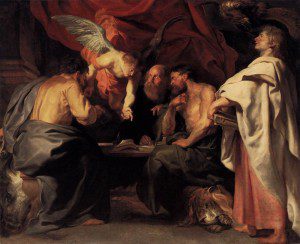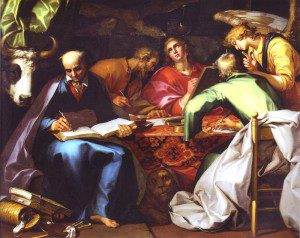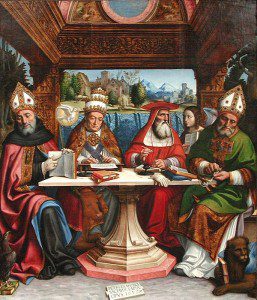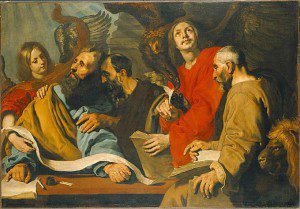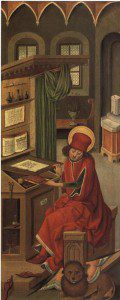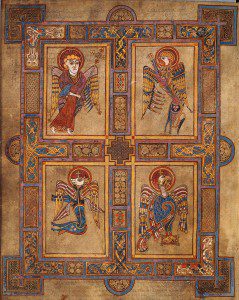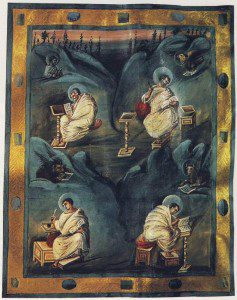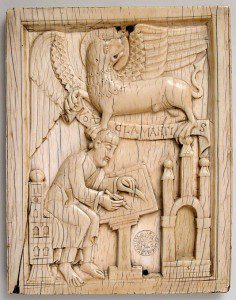Crowded, isn’t it? I don’t suppose the four evangelists ever met under one roof, but if that marvelous event ever occurred, it’s highly unlikely that they would have assembled like they did in this painting, by Rubens. An extra guy in the group is fine, even if he is an angel. But an ox? A lion? An eagle?
Even more remarkable, such menagerie images are a mainstay of Western religious art.
Let me say what others might be thinking. Who got to clean up afterwards?
There is, of course, a story here. No later than the second century, Christian thinkers decided that there must be four gospels and four evangelists, no more, no less. Each, also was given a symbol, recalling the vision of the four beasts in Ezekiel 1. “Each of the four had the face of a human being, and on the right side each had the face of a lion, and on the left the face of an ox; each also had the face of an eagle.”
This made some sense. Perhaps Matthew’s was a particularly human portrait of Jesus, while John, plausibly, did soar like an eagle. And Luke’s ox (or bull), or Mark’s Lion …. Well, maybe the model doesn’t work perfectly.
Over time, artists had a problem. They wanted to depict the four evangelists, and make them recognizable by their symbolic beasts. Typically, the four might be grouped, for instance surrounding a pulpit.
The resulting pictures could look a little startling. Yes, by all means, show John with his eagle. But if you are depicting him writing at a desk, the eagle looks a bit like a wildly inappropriate pet.
The other animals look just as startling. And when the four were depicted together, the results looked bizarre indeed.
Such images teach us a lot about how religious iconography works and how, sometimes, it could pass over that thin line that separates awe-inspiring from, well, funny.
Let me just end with a lovely image of the four, this time without their beasts. This is by Jacob Jordaens.


